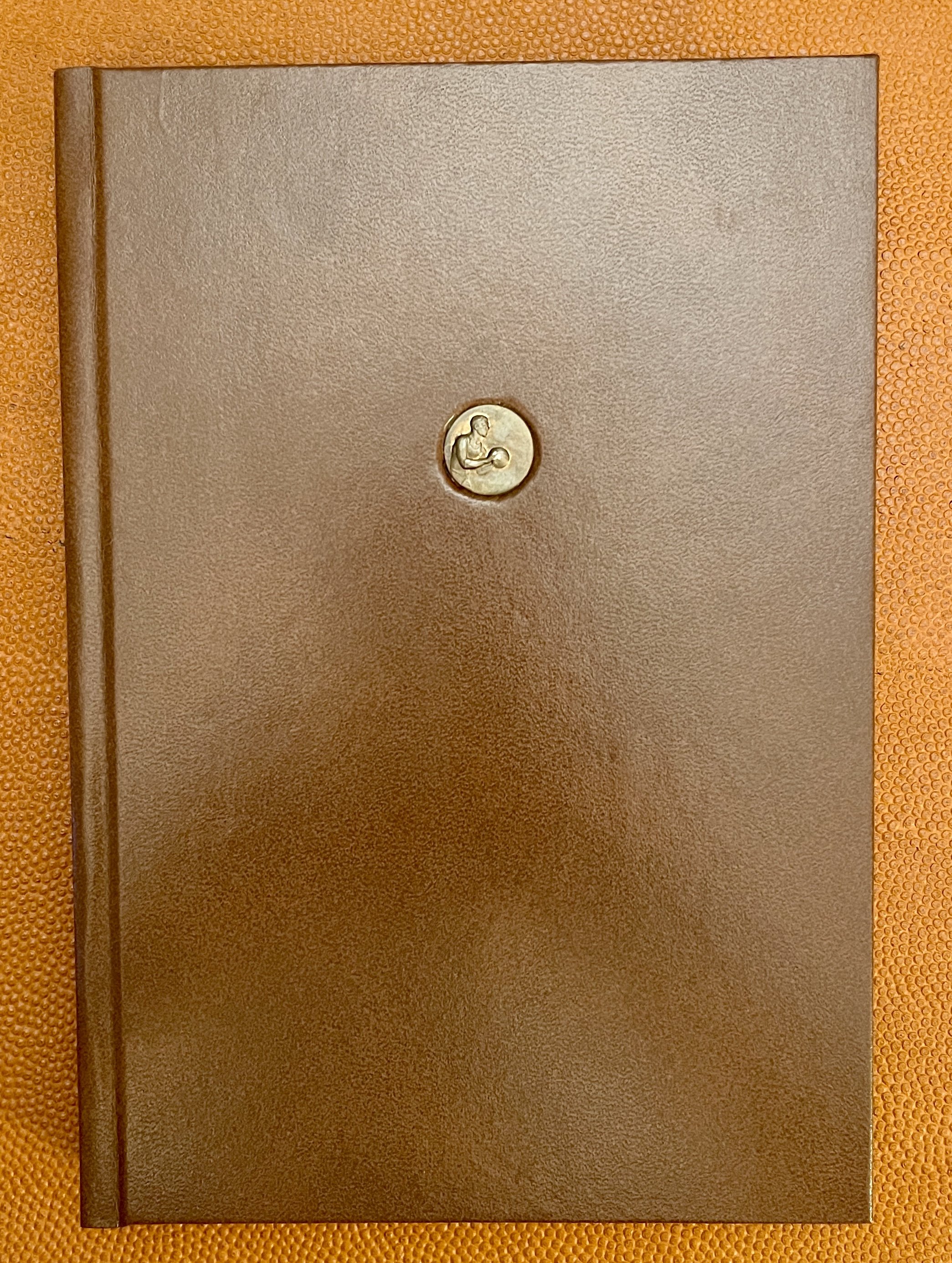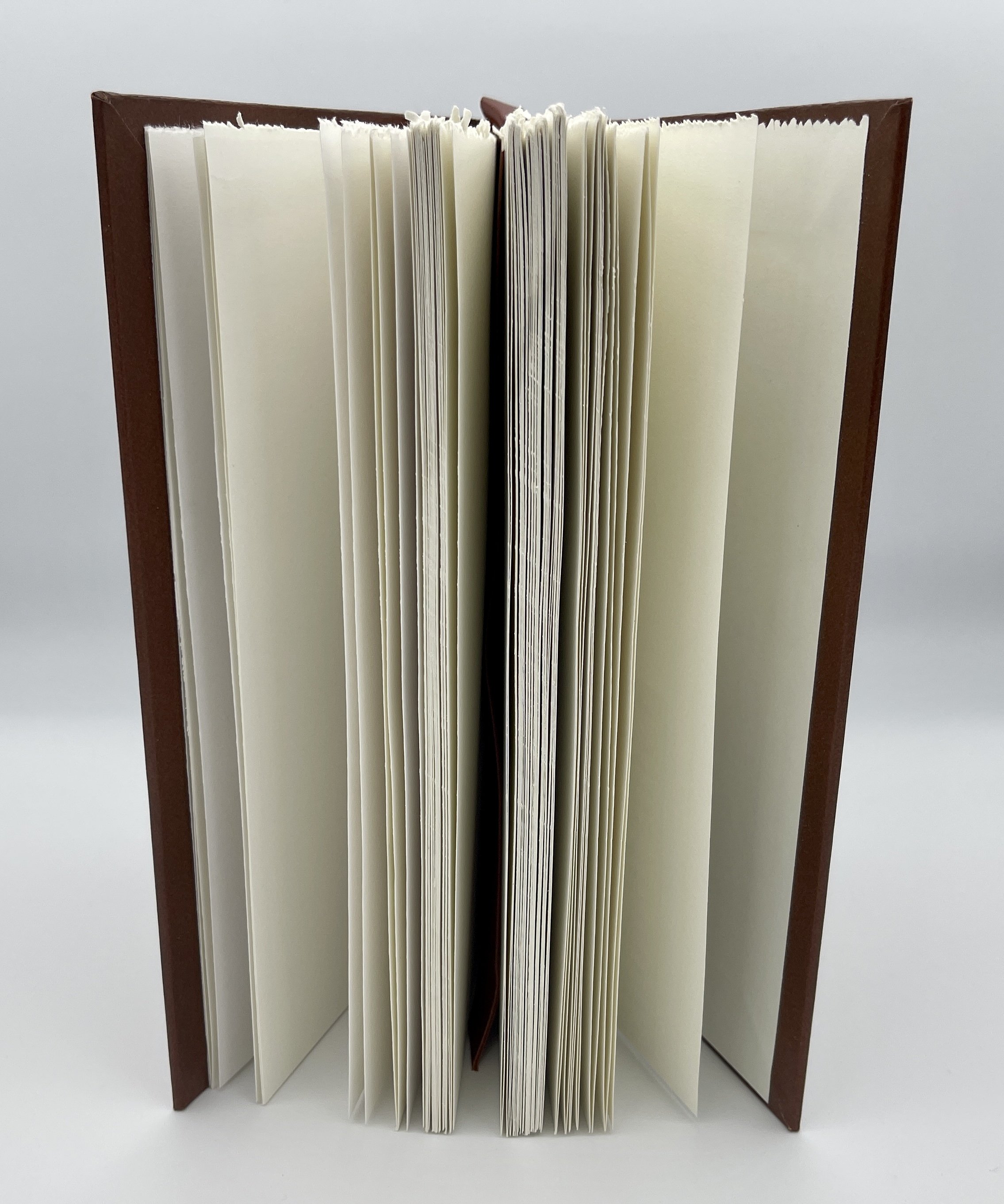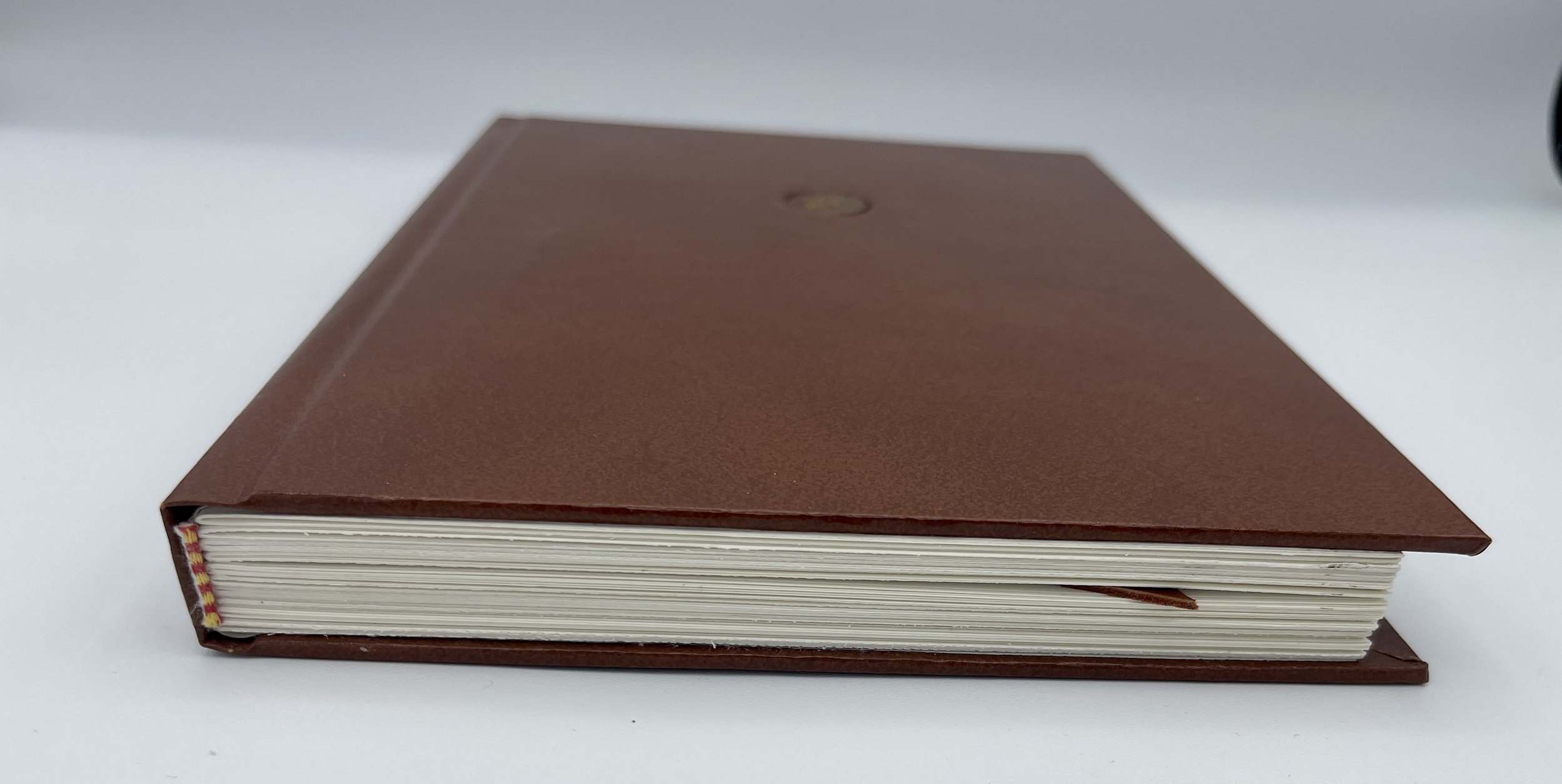Free Throw
This book is made from 80# sulphite drawing paper sewn with Irish linen thread in the linked stitch pattern that was favored by the ancient Copts and discovered again in 1945 in Nag Hamadi, Egypt. It allows the book to lie open easily to any page.
The book’s endbands are red and yellow cotton, and its bookmark is light brown goatskin. Its boards are wrapped in light brown leather.
Treasure binding began with monks in the 6th Century who would encrust volumes with jewels. During the Renaissance, there was a resurgence in treasure binding. This is a contemporary revival of the treasure binding in which a lucky charm has been embedded in the cover of this book.
The talisman in this book is an early 20th century copper basket ball medal depicting an unguarded player setting up a shot. This book will earn you a free throw without getting fouled.
This book is roughly 6 x 9” with a few more than 150 blank pages.
This book is made from 80# sulphite drawing paper sewn with Irish linen thread in the linked stitch pattern that was favored by the ancient Copts and discovered again in 1945 in Nag Hamadi, Egypt. It allows the book to lie open easily to any page.
The book’s endbands are red and yellow cotton, and its bookmark is light brown goatskin. Its boards are wrapped in light brown leather.
Treasure binding began with monks in the 6th Century who would encrust volumes with jewels. During the Renaissance, there was a resurgence in treasure binding. This is a contemporary revival of the treasure binding in which a lucky charm has been embedded in the cover of this book.
The talisman in this book is an early 20th century copper basket ball medal depicting an unguarded player setting up a shot. This book will earn you a free throw without getting fouled.
This book is roughly 6 x 9” with a few more than 150 blank pages.
This book is made from 80# sulphite drawing paper sewn with Irish linen thread in the linked stitch pattern that was favored by the ancient Copts and discovered again in 1945 in Nag Hamadi, Egypt. It allows the book to lie open easily to any page.
The book’s endbands are red and yellow cotton, and its bookmark is light brown goatskin. Its boards are wrapped in light brown leather.
Treasure binding began with monks in the 6th Century who would encrust volumes with jewels. During the Renaissance, there was a resurgence in treasure binding. This is a contemporary revival of the treasure binding in which a lucky charm has been embedded in the cover of this book.
The talisman in this book is an early 20th century copper basket ball medal depicting an unguarded player setting up a shot. This book will earn you a free throw without getting fouled.
This book is roughly 6 x 9” with a few more than 150 blank pages.







